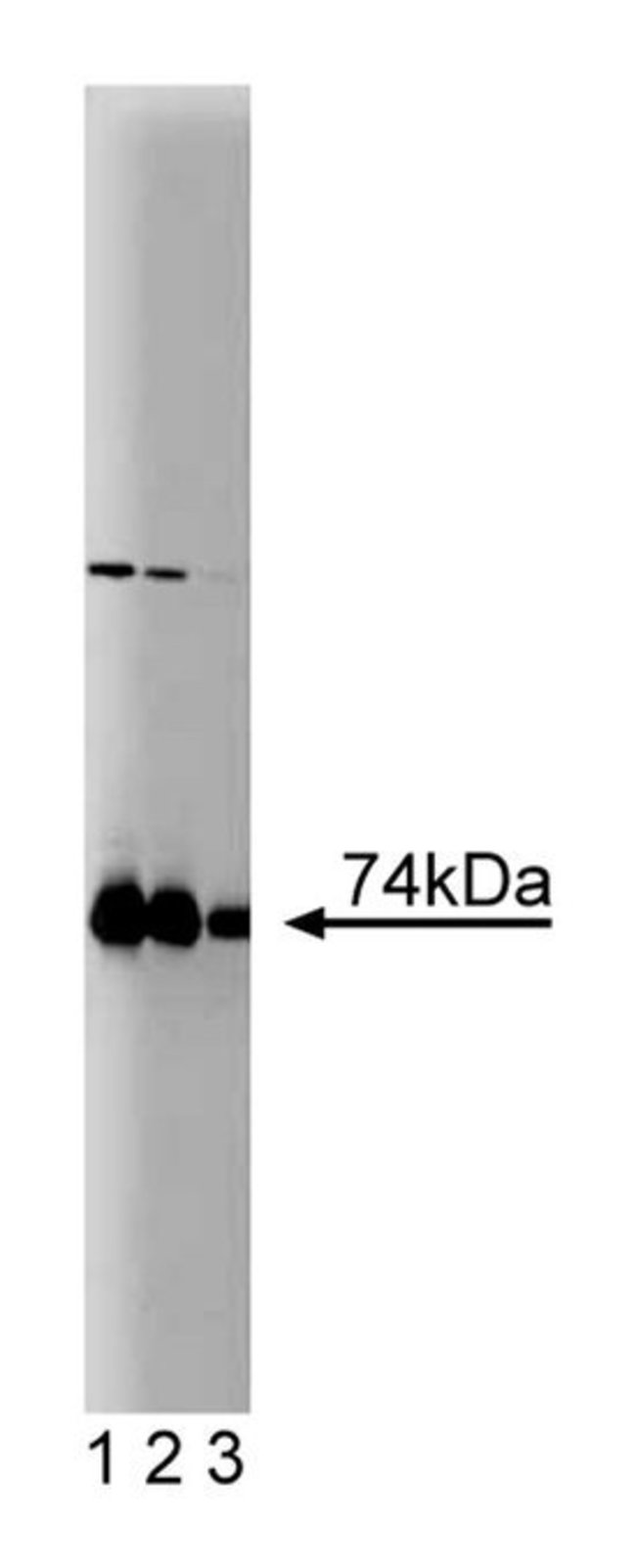PKCι Mouse, Unlabeled, Clone: 23, BD, Mouse Monoclonal Antibody, Each

Details
The Protein Kinase C (PKC) family of homologous serine/threonine protein kinases is involved in a number of processes such as growth, differentiation, and cytokine secretion. At least eleven isozymes have been described. These proteins are products of multiple genes and alternative splicing. PKC consists of a single polypeptide chain containing four conserved regions (C) and five variable regions(V). The N-terminal half containing C1, C2, V1, and V2 constitutes the regulatory domain and interacts with the PKC activators Ca2 , phospholipid, diacylglycerol, or phorbol ester. However, the novel PKC (nPKC) subfamily members (δ, ε, η and θ isoforms) and the atypical PKC (aPKC) subfamily members (ζ, ι and γ isoforms) are Ca2 independent and lack the C2 domain. The aPKC members are unique in that their activity is independent of diacylglycerols and phorbol esters. They also lack one repeat of the cysteine-rich sequences that are conserved in cPKC and nPKC. The C-terminal region of PKC contains the catalytic domain. The PKC pathway represents a major signal transduction system that is activated following ligand-stimulation of transmembrane receptors by hormones, neurotransmitters, and growth factors. PKCι was isolated from a human kidney cDNA library. It is highly expressed in brain and lung, but it is also seen in many other tissues at lower levels. PKCι shows the most similarity to PKCζ , 72% overall identity. These two enzymes share a highly conserved pseudosubstrate sequence, the absence of a Ca2 -binding region, and the presence of only one zinc finger-like domain. It is thought that PKC? has a role in the secretory response to nutrients.Immunofluorescence, Immunohistochemistry, Immunoprecipitation, Western Blotting
Additional Information
| SKU | 10134815 |
|---|---|
| UOM | Each |
| UNSPSC | 12352203 |
| Manufacturer Part Number | 610176 |

